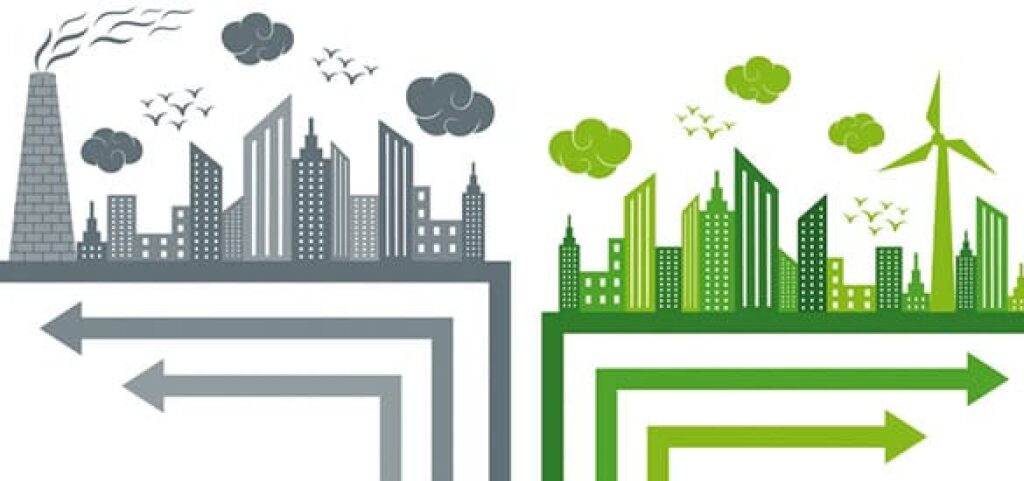Six of these emerging economies – China, India, Indonesia, Brazil, Mexico and South Africa – contributed more than 40% of global CO₂ emissions in 2019. That’s 1.5 times the combined emissions of the US and Europe. However, at the same time, China, India and Brazil were the first, fourth and sixth largest producers of renewable electricity. These three countries, the largest emerging economies, are now at a crucial juncture, facing immense potential to become major innovators in the development of clean energy technology.
Solar energy roars in China
China, which has become the leading manufacturer and largest market for solar photovoltaic (PV) cells and modules, accounting for 69% of world production. In the past 40 years, solar panel costs have dropped by more than 99%, recently driven by low-cost manufacturing in China.
Between 2014 and 2018, China added around 158 gigawatts of photovoltaic solar energy, roughly the same as Brazil’s total power generation capacity.
Biofuels in Brazil
The long-term growth of Brazil to become the largest producer, exporter and market of ethanol biofuel made from sugar cane.
Ethanol-powered vehicles increased their share of Brazil’s new car sales from 30% in 1980 to 90% in 1985. After ethanol stagnated in the 1990s, biofuels were revived with the introduction of high-end vehicles. flexible fuel that use any mixture of gasoline and ethanol. Their share rose from negligible in 2003 to 85% of new cars sold just five years later, and it has held steady ever since.
There are some environmental and socioeconomic impacts. These include deforestation for sugarcane plantations, soil erosion, air and water pollution, and consolidation of land ownership among the large ethanol producers. But when you look at the entire life cycle of sugarcane ethanol fuel, from the crop to the car, its greenhouse gas emissions are lower than those of gasoline or corn ethanol.
India’s remarkable transition to renewables through LEDs
As per the Central Electricity Authority, India’s renewable energy installed capacity has grown to 88 GW upto August 2020.
In terms of usage, India has grown 130-fold in its light-emitting diode (LED) bulb market in just five years. LED bulbs are more energy efficient and last much longer than incandescent bulbs, tube lights, and compact fluorescent bulbs. In India, they are mainly used for residential lighting and street lamps.
India’s LED transition is estimated to save more than 40 terawatt hours (TWh) of electricity each year, roughly enough to power an average 37 million Indian households or all of Denmark for one year. In three years, the country went from a negligible share of the global LED market to around 10%.
Three lessons for the rest of the world
Public sector companies are essential
In all three cases, companies with significant capital owned by governments played a crucial role. India, a joint venture of four utilities called EESL purchased energy efficient LED bulbs in bulk, lowered prices through competitive tenders, conducted national marketing campaigns, and sold the bulbs to customers through new distribution channels.
In China, public sector companies provided venture capital investments and loans that enabled rapid expansion of private sector solar startups. In Brazil, the major public oil company closed the gap between ethanol production and the consumer point of purchase by purchasing ethanol from plants, providing storage and transportation, and distributing fuel through the country’s largest fuel pump network. .
Domestic options in a world economy
Second, there is the need to strengthen the complementary links between the world economy and national technology options. For example, India was able to accelerate its LED market because its bulk purchasing and bulb distribution policies supplemented access to low-cost, large-scale LED manufacturing from China. Similarly, China’s early domestic support for export-oriented high-tech manufacturing complemented the growing demand for solar cells in Germany.
R&D that unites academia and industry
Finally, the commitment between industry and universities and public sector research institutions is essential. For example, Brazil could develop the technology to make ethanol cost-competitive with gasoline only because of strong links between public sector research institutes and industry, including the “Sugarcane Genome Project” funded by government.
Our analysis shows that emerging economies are likely to start from a technologically and economically disadvantaged position and yet successfully accelerate the transition to clean energy technologies. These lessons bring good news, as success or failure in this endeavor will have long-term energy and climate consequences for everyone.

